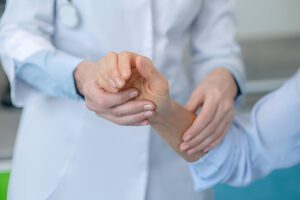Regaining Strength and Dexterity with Hand Reconstruction Exercises
Undergoing hand reconstruction surgery is a major step towards regaining function and improving quality of life. Post-surgery rehabilitation plays a vital role in this process, as it helps restore movement, strength, and dexterity to the affected hand. For patients, therapists, and recipients of orthopedic surgery, understanding the right exercises for hand function improvement is crucial. In this guide, we’ll explore essential exercises and tips to aid in successful rehabilitation.
Understanding Hand Function

The human hand is a complex marvel of bones, muscles, and nerves working together. Each component plays a crucial role in allowing for a wide range of movements and functions. After surgery, these mechanisms may be compromised, affecting tasks from gripping objects to typing. Knowing how the hand functions can inform the rehabilitation process by highlighting which areas need targeted attention.
During reconstruction, some of the hand’s natural mechanics might be altered. This can lead to stiffness, reduced range of motion, and weakened grip strength. Post-surgery rehab focuses on re-establishing these functions to return the hand to its optimal state. A deep understanding also aids therapists in identifying specific challenges a patient may face.
By carefully analyzing how surgery affects hand function, patients and therapists can better plan a rehab strategy. This knowledge supports a personalized approach, tailoring exercises to address individual needs and maximize recovery potential.
Common Challenges After Hand Reconstruction

Post-surgery, patients often encounter several challenges that can hinder hand function. These include swelling, stiffness, and pain, all of which can limit movement and strength. Addressing these issues through targeted exercises is paramount for a successful recovery.
Swelling often leads to restricted movement, making it difficult to perform everyday tasks. Additionally, pain can create fear of movement, further delaying progress. Patients need to overcome these challenges to regain their hand’s full capabilities.
Targeted exercises can help alleviate stiffness and restore range of motion. By progressively introducing these into a routine, patients can begin to see improvements and build confidence in their hand’s abilities. Overcoming these challenges is a key milestone in the recovery process.
Exercises to Improve Hand Function
Rehabilitation for post-surgery hand function is built around a variety of exercises focused on range of motion, grip strength, and dexterity. These exercises are key to regaining full functionality and improving hand reconstruction outcomes.
Range of Motion Exercises
These exercises are critical for reducing stiffness and increasing flexibility. Techniques such as wrist bends, finger stretches, and thumb rotations help enhance mobility. Regular practice of these movements is vital for rebuilding hand agility.
Grip Strength Exercises
Strengthening grip is essential for regaining the ability to hold and manipulate objects. Squeezing stress balls, using hand grippers, and performing towel wringing exercises are effective ways to boost grip strength. Consistency in these exercises greatly aids in restoring power to the hand.
Dexterity Exercises
Dexterity is fundamental for fine motor skills and precise movements. Tasks like picking up small objects, finger opposition drills, and piano key tapping can significantly improve finger coordination. Committing to these exercises helps refine hand functions necessary for daily tasks.
Tips for Making Progress
Setting realistic goals and monitoring progress are essential components of any rehabilitation plan. Start by establishing small, achievable objectives that gradually advance as improvements are observed. This approach helps maintain motivation and fosters a positive outlook on recovery.
Incorporating exercises into daily routines can enhance consistency and results. Simple adjustments like doing hand exercises during TV time or before bed can ensure they’re regularly performed. Keeping track of progress through a journal or app also provides valuable insights into improvements and areas needing more focus.
Engaging with a supportive network, including therapists and fellow patients, can offer encouragement and shared experiences. This community support plays a significant role in maintaining momentum and achieving long-term rehabilitation success.
Case Studies
Real-life examples reinforce the importance of dedicated rehabilitation exercises post-surgery. Consider Jane, who, after her hand reconstruction, diligently performed her prescribed exercises daily. Her commitment resulted in significant improvement, restoring full range of motion and strength within months.
Similarly, Tom faced challenges with grip strength following his surgery. By incorporating consistent grip exercises into his routine, he experienced marked progress, eventually returning to his job as a mechanic. These cases illustrate the potential of dedicated effort and strategic exercise in overcoming post-surgery challenges.
These stories serve as inspiration for others embarking on their rehabilitation journeys. They demonstrate the effectiveness of targeted exercises and the positive outcomes achievable with persistence and dedication.
The Path to Recovery
In conclusion, hand reconstruction exercises play a crucial role in the rehabilitation process. They address the common challenges faced by post-surgery patients and provide a structured approach to regaining hand function. By understanding the basic mechanics, setting attainable goals, and incorporating exercises into daily life, patients can achieve significant improvements.
For anyone undergoing hand surgery or assisting in rehabilitation, prioritizing these exercises is essential. The path to recovery is unique for each individual, but with consistent effort and the right exercises, full hand function is within reach.
To further enhance your understanding and explore additional resources, consider connecting with physical therapists or accessing online rehab platforms. By doing so, you can continue to learn and adapt your approach to maximize your recovery and regain quality of life.
